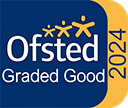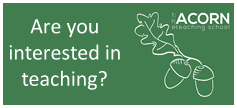Nursery News 24th February 2025
NURSERY NEWS
24th February 2025 – Edition 362
Find out About
A. An Apology, regarding Parent Consultations week beginning 10th February 2025.
B. Parent Consultations. A reminder….
C. An Open School Event: For Big Nursery Red Group Parents: Basic Skills.
D. What are the children learning about this week?
E. Phonics program starts this week!
A. An Apology, regarding Parent Consultations week beginning 10th February 2025.
I made a mistake in my last newsletter, I wrote that it was Big Nursery Consultations, then listed the Little Nursery Staff dates and times. I know this caused some Big Nursery parents to think that they had missed their consultation. I am very sorry for the mix up I caused. Big Nursery Consultations are this week, please see below.
B: Parent Consultations. A reminder…
Big Nursery Consultations will be taking place during this week, week beginning 24th February 2025. These consultations will be on the telephone, will last 5 minutes and be at the following times:
Miss Skai Monday 24th February between 3:15pm and 3:55pm
Mrs Patterson Monday 24th February between 3:15pm and 3:50pm
Miss Howe Thursday 27th February between 3:15pm and 4:10pm
Miss Cashmore Thursday 27th February between 3:15pm and 4:20pm
C. An Open School Event: For Big Nursery Red Group Parents: Basic Skills.
Miss Skai teaches Big Nursery Red Group children ‘Basic Skills’ on a Wednesday morning. The children move to a quiet space in Room 5 where they work in small groups (approx. 8 children) to learn reading, writing, mathematical skills and problem solving. We would like to invite Miss Skai’s Red group parents in to observe a 30 minute reading/writing activity on Wednesday 12th March. A further invitation letter will follow to Red Group parents so that we can match up time slots, so parents can join their child’s small group. Green Group had their Basic Skills groups in the Autumn Term 2024, Yellow Group have Basic skills in the Summer Term 2025. Eventually all parents will be invited to observe Basic skills sessions when their child is being taught.
D. What are the children learning about this week?
The theme this week is Police and Fire.
This week the children will learn all about fire fighters and police officers. The staff will teach the children how important these people are and how these people help us.
To follow up on their learning, the children will have lots of fun role play activities to take part in. There will be a fire station and a police station set up in different areas for the children to investigate, there will also be a police van to support their play. Lots of relevant vocabulary will be used during play to support the children’s learning. For the younger children, there will be opportunities for the children to explore the theme in simpler ways, including; dressing up, completing puzzles and creating art work.
Weather permitting, staff are hoping to be able to show our children about the importance of fire safety and what we should do in the event of a fire. This will be done by staff creating a safe space to set a small controlled fire. Staff will ensure that there is a restricted area to set up a small fire and they will use this to discuss how fires are created and safely put out. Staff will emphasise the importance of staying at a safe distance from the fire, they will also explain that if ever we see a fire, we should call the fire brigade for help. This will take place in a well organised environment and safety is of the upmost importance to us, if we feel that this event may become unsafe, we will decide to cancel this activity. There are many other activities happening throughout the school to teach the children about the roles of the fire and police services.
E. Phonics program starts this week!
Willow Nursery School Phonics Programme
‘Phonics’ is one tool children can use when they are beginning to learn to read and write. A definition of phonics follows on the next page.
The Department for Education (DfE) produced a phonics resource called Letters and Sounds: Principles and Practice of High Quality Phonics, which splits the teaching of phonics into six phases. At Willow, we work on phase 1 activities all the time. Phase 1 describes using activities such as storytelling and singing songs, rhymes, music, role play and listening games. This will give the children opportunities to listen carefully and talk extensively about what they hear, see and do. Phase 1 activities are designed to underpin and run alongside activities in other phases. Phase 2 is an introduction to more formal phonics work and involves teaching the children sets of letters in a specified order. The first set of letters to be learnt are s.a.t.i.p.n because these letters make a greater number of words than any other 6 letters in the alphabet. We feel that the children at Willow are ready to begin focussing on letter sounds in a fun and practical way.
What are we going to do?
- Each child will participate in 1 x 25 minute phonic sessions each week
- We are going to begin teaching 6 letter sounds, s.a.t.i.p.n. and will continue with one letter sound each week until the end of term
- We will teach the children that all letters have a name, and that these letters make a sound. For example: the letter S makes the sound ‘sss’
- We will use a mixture of songs, games, tongue twisters, art, drama and movement activities to teach the letter sounds.
We will use ‘Jolly Phonics’ with the children. Jolly Phonics is the name of a program used to teach phonics. Each week we will:
- Tell the children a story, which includes focussing on the sound we are trying to teach.
- Teach an action to represent the sound
- Send home a picture (linked to the story) for the children to colour, and they can practise writing the letter which represents the sound.
For example: The ‘s’ story involves finding a snake which goes ‘ssss’. The action for ‘s’ involves making a snaking movement with your hand and forearm and saying ’ssss’. The picture to take home is a picture of a snake
Helping at home:
The picture your child brings home will explain to you how to make the action to represent the sound. Talk with your child about what they have learned at school. Learn the actions along with your child. Making the movement may help your child to remember. Have fun!
Phonics
What is phonics?
Phonics is the word used to describe the sounds the letters make. In simple terms, the word ‘cat’ can be read from its three sounds: c-a-t.
These are not the names of the letters as we say them in the alphabet, but the sounds these letters make. The word ‘thick’ is made up of three sounds: th-i-ck, where pairs of letters combine to make a single sound. Similarly, ‘rash’ is made up of three sounds: r-a-sh.
There are 40+ sounds in English but only 26 letters that are used to represent these sounds.
The five basic skills for reading and writing are:
- Learning the letter sounds
- Learning the letter formation
- Blending
- Identifying sounds in words
- Spelling the tricky words
When reading, children need to understand the meaning of the words. Before they can do this, they have to be able to work out what the words say. The phonic skill for this is to look at the letters, say the sounds and hear the words. This is called blending.
The main phonetic skill for writing is to start with the spoken word, then listen, identify and write the sound in that word. The ability to hear the sounds in words is called phonological awareness. For example, with the word ’bin’ if you listen you hear the sounds ‘b……i….n’. Then if you know how to write those letter sounds, you can write the word ‘bin’ without help. This is the opposite to the skill needed for blending.
The letters for the 42 Sounds of English:
See below:
a ……ant, sand, caravan
ai……aim, aid, drain, (long a)
b……bat, bend, crab
c ……cat, cot, duck
d……dog, dip, sudden
e……egg, end, shed
ee……eel, creep, tree (long e)
f……fog, lift, fluff
g……goat, gap, digger
h……hop, hit, hill
i……ink, indian, drink
ie……pie, tie, die (long i)
j……jelly, jet, jumper
k……king, kind, kettle
l……leg, lost, shell
m……man, mill, shrimp
n……nut, nip, spin
o……orange, on, spot
oa……oak, oats, boat (long o)
p…….pig, pet, step
q……queen, quick, quin
r……run, rabbit, barrel
s…..sand, sun, twist
t……top, tug, mat
u…….up, under, lung
ue……due, Tuesday, cue
v……van, vet, give
w…..wind, went, swim
x…..x-ray, ox, flex
y……yell, yes, yellow
z……zoo, zebra, buzz
sh……ship, shop, wish
ch……chop, chick, much
th……this, then, with (voiced th)
th……thin, thick, thimble (unvoiced th)
ng……song, bang, string
oo……look, room, foot (little oo)
oo……moon, spoon, shoot (long oo)
ar……art, arm, start
er……kerb, stern, sister
or……order, corn, storm
oi……oil, ointment, spoil
ou……out, cloud, found



